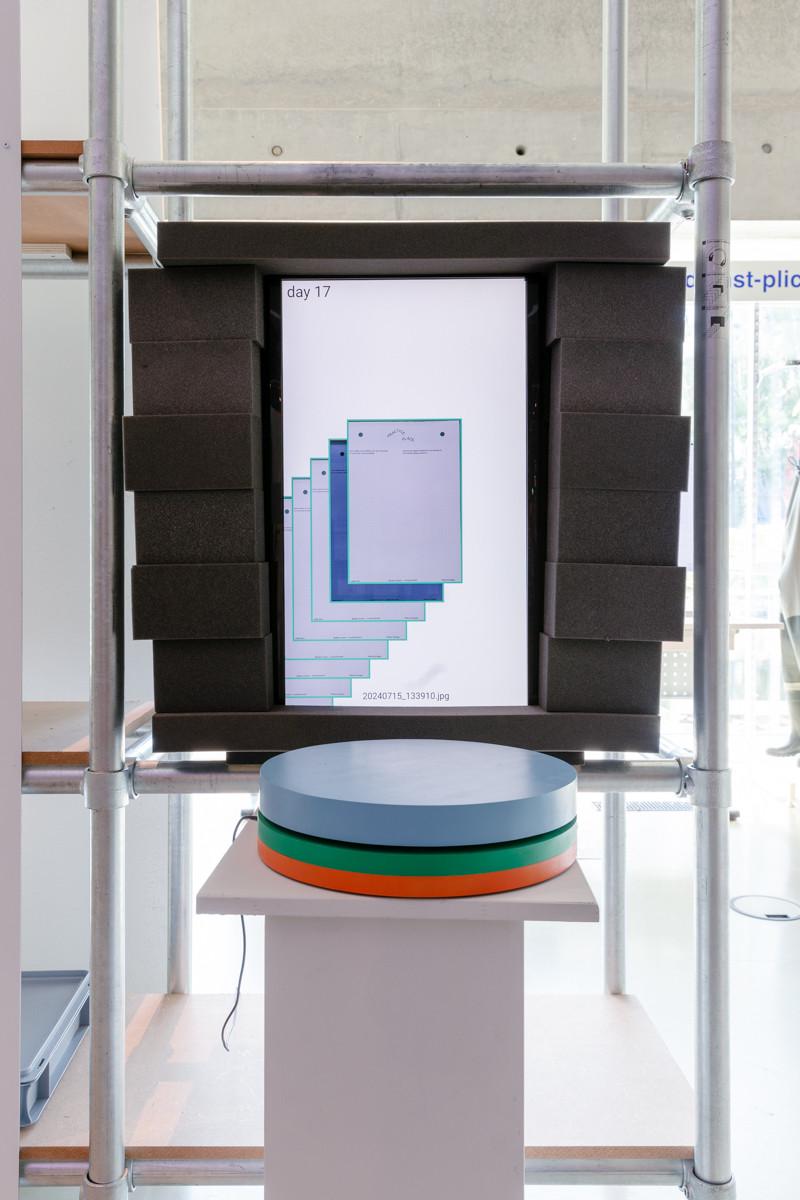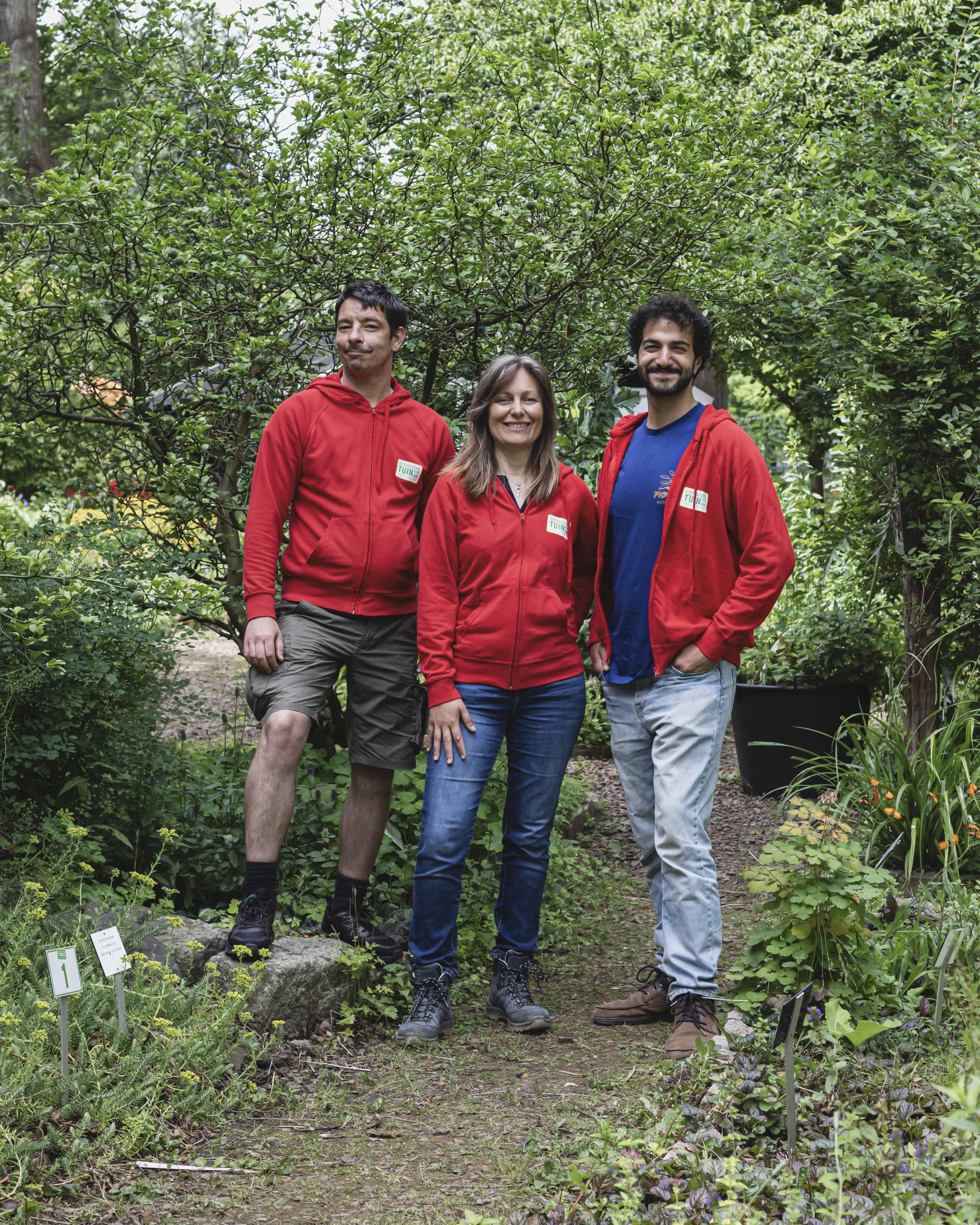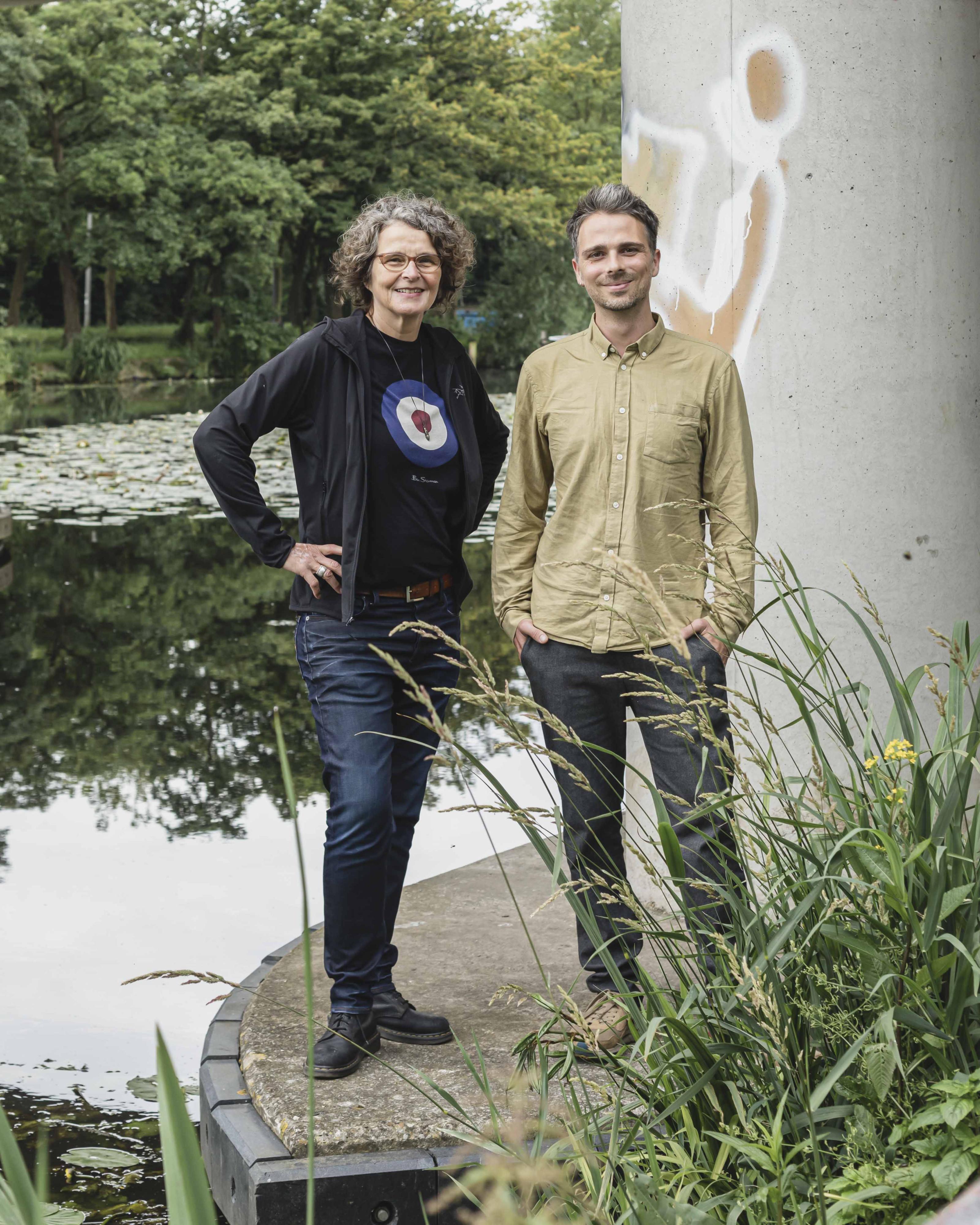With more than 70 architects, researchers, designers, and writers, the 11th edition of IABR "Nature of Hope" offers a wealth of perspectives and ideas on how architecture and spatial design can contribute to regenerating nature, biodiversity, and restoring ecological balance. But how do we preserve all those amazing, forward driving perspectives? When an exhibition becomes a place of encounter, the question of documentation arises: that is why IABR invited meta office to create an installation that serves as a digital, live archive. We spoke with Edward Zammit, one of the initiators of meta office about the installation, the biennials’ theme, and the processes involved.
meta office began as a research-based design collective, focusing on how tangible materials can interface with digital processes, working at the intersection of architecture, multimedia, and technology. The core team, composed of Lauritz Bohne, Lea Scherer, and Edward Zammit, expanded to include collaborators like digital designer Felix Reiterer and architect-carpenter Manfred Scheibelreiter. meta office innovatively merges physical and digital spaces in its projects, collaborating with a growing network of industrial designers, manufacturers, and media artists. Their work has been featured in museums and exhibitions including Centre Pompidou in Paris, Fondazione Mast in Bologna, and C.I.V.A. in Brussels.
And now, the collective can add the IABR at Nieuwe Instituut to that list this year. But instead of showcasing one of their own creations, their work will be in the background, archiving all the works and dynamics from June to October, the duration of the biennial. In collaboration with the edition's curators, meta office developed an interactive live archive to document the event. The installation combines traditional design with interactive elements where participants contribute, adding another layer of engagement by granting visitors ownership. The installation uses four tools to input thoughts and learnings, creating a publicly sourced cartography through sound memos, photographs, and drawings. This feeds into a main ‘open document,’ which will grow continuously throughout the biennale and beyond.
The process of archiving, both physical and digital, involves the careful collection, preservation, and organization of information to ensure knowledge remains accessible. The biennale offers an extensive collection of innovative projects and experimental works that are of great value to the future practice within various disciplines. The curators therefore consider it essential to document all these contributions. This is especially important as numerous workshops, events, and activities are organized during the biennale at the Practice Place. This way, not only the experts but especially the visitors gain ownership over the knowledge that ultimately emerges from Nature of Hope. It embraces the concept of both a physical and digital structure for organizing knowledge, ensuring that it remains available online for future generations of makers once the biennale concludes in October.
For Edward, the primary goal is to embrace a more inclusive approach to the discipline of architecture. He explains that at meta office, integrating diverse modes of knowledge into the architectural field is crucial. "We celebrate inclusivity and plurality. Architects often want to do everything themselves, seeing space as an open canvas created by individuals. However, we believe space is shaped by collective efforts. We aim to give room to different visions, knowledge, and working methods that are equally valuable. Participants here will bring the installation to life—people visiting the biennial from various backgrounds, fields, and nationalities, even those outside the realm of architecture. This will generate new knowledge that extends the discourse of architecture beyond the event. Our vision is for participants to be honest and open, ensuring that the project's mapping remains authentic."
Given Edward's vision, designing the installation for IABR was a perfect fit for meta office, despite it being their first highly interactive project. The firm typically focuses on object-based design, but this opportunity allowed them to contribute to broadening the discipline. "Architecture needs to let its guard down, become accessible, and open its discourse to other forms of knowledge and practices that are transforming the nature of design disciplines," Edward noted. This installation embodies that philosophy, encouraging a more inclusive and collaborative approach.
Edward is eager to see how participants will bring the installation to life. He believes that the longer it runs, the more value it gains. He is also excited about the biennale’s Botanical Monuments and their connection to the public program. “The biennale’s engagement with local initiatives puts the theme of hope into practice across the entire city in a very hands-on way. There’s much to learn from how other disciplines address similar issues. In Rotterdam, small but driven collectives are doing significant work, making it an excellent city for new alliances and uncovering hidden gems for our practice.” Curious? Check out the installation at the Practice Place, part of the exhibition in Nieuwe Instituut.




